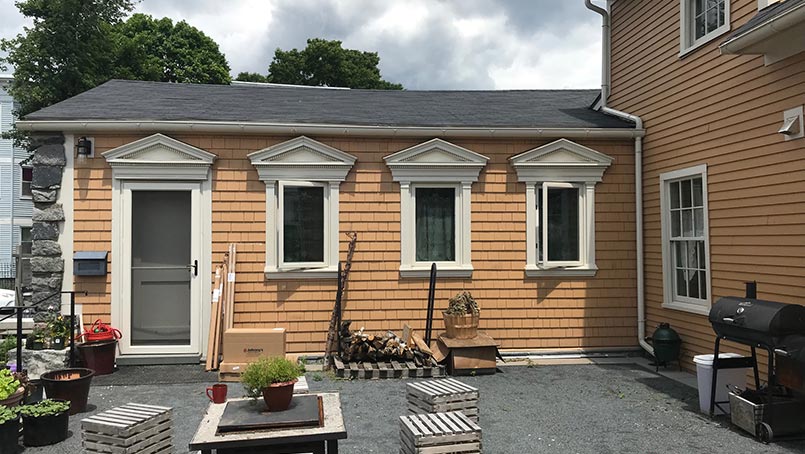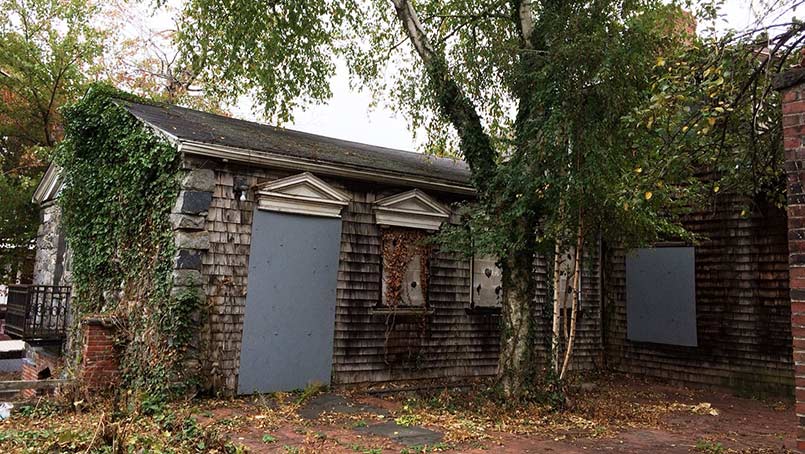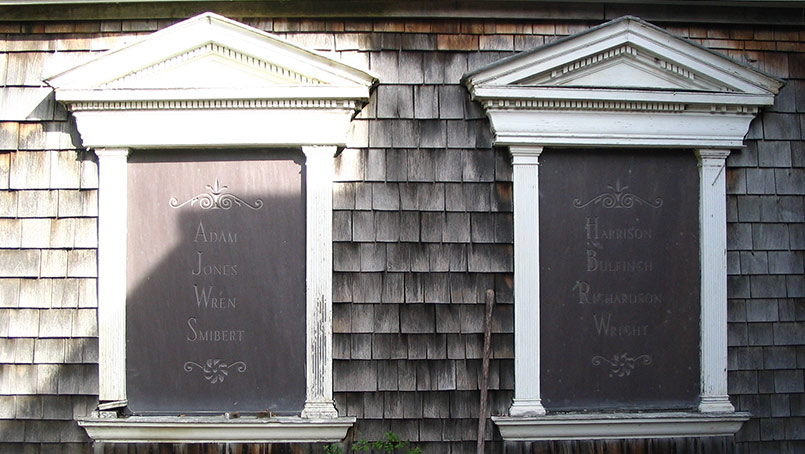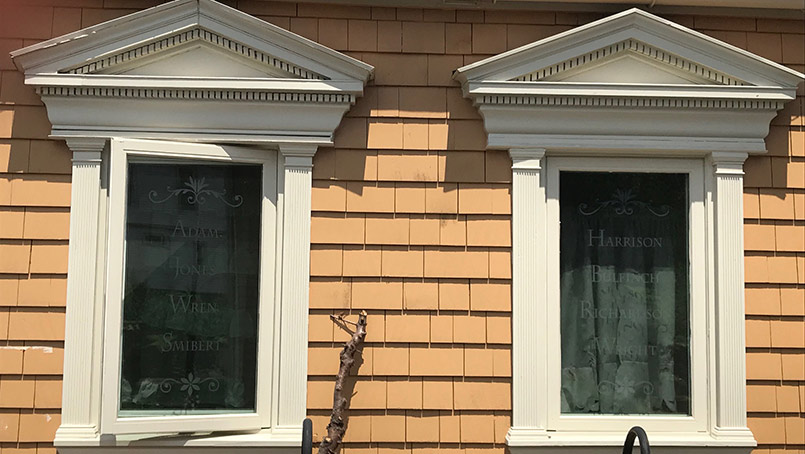
14 Jun History Etched in Glass at the Fowler Clark Epstein Farm
Jorge Epstein and his wife Ida bought the Fowler Clark farm in Mattapan in 1941 and lived there for 57 years until Jorge’s death in 1998. In the 1940s, Jorge was a jeweler and operated a retail business in downtown Boston, but he later operated a jewelry business in the Fowler Clark barn, employing several people. Over time, Jorge’s professional focus shifted from selling jewelry to architectural salvage, which he collected from buildings demolished throughout the Boston area. He initially invited customers to the farm to shop for salvaged items, but eventually relocated his business, Old Mansions, to a larger space on Blue Hill Ave.

It is in large part Jorge Epstein’s passion for history, art and architecture that we have to thank for the very existence of the landmark farm. The Epsteins chose not to demolish the barn, subdivide the land, or substantially renovate the original farmhouse, but they did leave their own mark on the property, adding to the quirky character of the place. Perhaps Jorge Epstein’s most notable contribution is the rear ell of the farmhouse, which was built in 1967, replacing an earlier ell. According to the building permit, this addition was built as a library, and we’re told by Epstein’s former employee Walter Santory that Jorge invited certain customers into the library to view items for sale. From the shingled side walls, the addition appears to be wood frame, but it is in fact built of cinder block. The rear façade is an eccentric amalgam of stone and salvaged artifacts, many of which were hidden with ivy when HBI first bought the property. The south façade, which faces the barn, contained a door and three faux windows, embellished with salvaged pediments and fitted with slate panels where glass windows would have been. The slate “windows” were engraved with the names of artists and architects that Jorge Epstein admired.

When HBI acquired the property in 2015, the slate window panels were missing. All that remained were some photographs taken in 2005 that showed only two of the slate panels. The recent rehabilitation of the farm converted the rear ell to an apartment for resident farmers, which meant the previous faux windows needed to become real windows. In a tribute to the Jorge Epstein, we proposed to recreate the text from the slate panels as “etched” glass. Because we only have photos of two of the three slate panels, we needed to create new text for the third window. After much consideration, we opted to list the farm’s historic and current occupants.

Visitors to the Fowler Clark Epstein Farm might not immediately notice the subtle text on the addition’s windows, and if they do, they might wonder about the meaning and the significance of the names chosen. But historic buildings are filled with mysteries; this is one for future generations to ponder.



